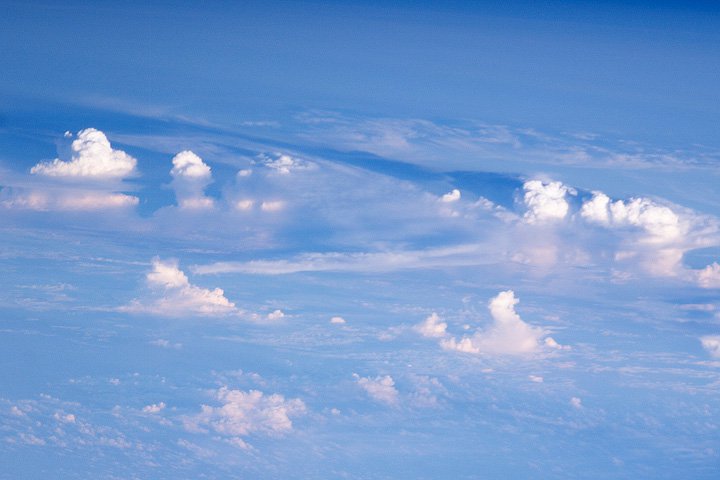
May 29, 2018
Program News
Revisiting Earth’s Oxygenation 2.4 Billion Years Ago
With a NASA Astrobiology Postdoctoral Fellowship, Nadia Szeinbaum will go back in time

Over two billion years ago, the course of life on Earth was changed forever with the rise of oxygen in our planet's atmosphere. Here, cumulus clouds carry solar energy away from Earth’s surface over South America.Image credit: NASA, Astronaut Photo-graph ISS006-E-19436.
Earth experienced a profound change 2.4 billion years ago. That’s when oxygen, a by-product of photosynthesis, became an important component of its atmosphere.
The earliest photosynthetic organisms were blue-green algae, or cyanobacteria. Their descendants still exist today.
Cyanobacteria emerged billions of years ago, when Earth supported only anaerobic life and before life evolved mechanisms to cope with the toxic effects of reactive forms of oxygen. Abundant iron in ancient oceans exacerbated oxygen’s reactivity, making it an even stronger poison.
So how did ancient cyanobacteria cope with the effects of the toxic by-product of their own metabolism?

Nadia Szeinbaum.Image credit: Georgia Tech.
In May, Georgia Tech’s Nadia Szeinbaum began to pursue that question with a fellowship from the NASA Astrobiology Postdoctoral Program. She will assemble microbial communities to test the hypothesis that cyanobacteria survived rising oxygen with help from other bacteria.
Click here to read the full press release from Georgia Tech.